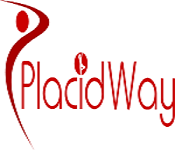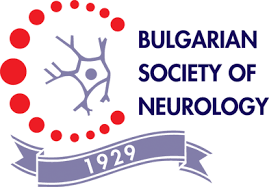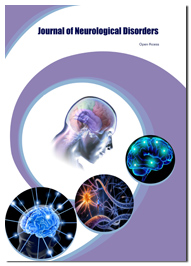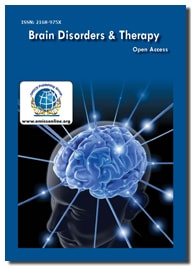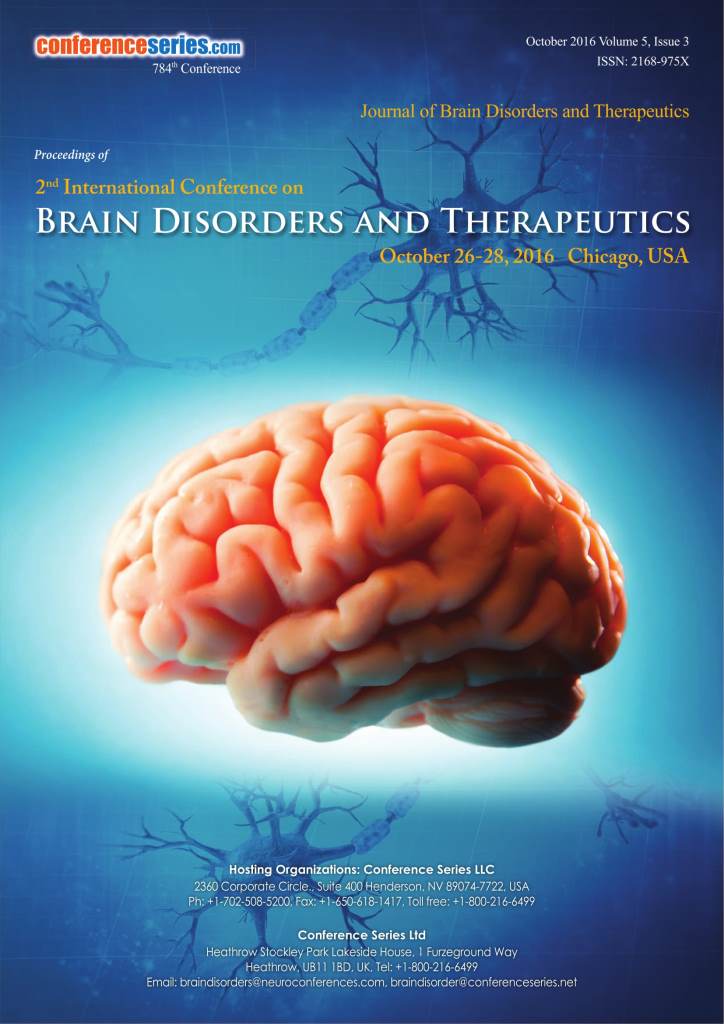Theme: New Innovations In Neurology and Brain Research
BRAIN 2018
- About Brain Congress 2018
- Sessions of Brain Congress 2018
- New Updates : World Brain Congress 2018
- Market Analysis
World Brain Congress 2018 welcomes attendees, presenters, and exhibitors from all over the world to attend and register for the International World Brain Congress during December 5-7, 2018 at Dubai, UAE which has been planned and implemented in accordance with the accreditation requirements and policies of the Accreditation Committee.
Brain Congress 2018 Conference will give a perfect platform to discuss and share the knowledge and ideas on brain injury. These meetings provide an ideal combination of excellent science, an open atmosphere and allowing attendees and speakers to easily focus on the academic exchange of ideas.
This International meeting is an effort to make possible interactions among world-leading scientists, research scholars, Health Care professionals, Neurosurgeons, young researchers from different parts of the world to exchange their knowledge and conduct symposia, show experiments with new innovative techniques that disseminate information about clinical tradition, best practices, skills and knowledge in the field of neurology, neuroscience, Pyscharity In World Brain Congress 2018, international symposiums, B2B meetings, international workshops will also be organized to discuss the specific topics in the field of neurology.
Target Audience:
- Neurosurgeons
- Neurologists and Directors
- Physicians
- Neuroscientists
- Specialists
- Researchers
- Healthcare professionals
- Professors
- Industrial Experts
- Neurosurgeons
- Psychiatrist
- Nutritional Scientists
- Lecturers and Students from Academia in the study of Dementia
- Students from Academia in the research of Neurology
- Neuro Physiotherapists
Conference Sponsor and Exhibitor Opportunities
The Conference offers the opportunity to become a conference sponsor or exhibitor.
Track 1: Brain Disease & Failure
The brain is the complex structure of the body. It is the master gland and control center. Inflammation in the brain can lead to problems such as vision loss, weakness and paralysis, and Loss of brain cells, which can affect your ability to think clearly. Brain tumors can also effect on nerves and affect brain function. According to the Brain Injury Association of America in the U.S., every year about 2.6 million people have some type of brain injury whether as a result of trauma, stroke, tumor or other illnesses. Neuroinflammation is the root cause of several disorders of the central nervous system, but it has led to many misconceptions in research and clinical approaches. It is now recognized that neuroinflammation in chronic neurodegenerative conditions is common in many diseases including Alzheimer's disease and age-related dementia.
Track 2: Brain Diagnosis
A century ago, the only way to make a high-quality prognosis for many neurological disorders is by doing the post-mortem. But a long time of simple research, and the improvement of techniques that permit scientists to use accurate tools to diagnose sickness and to check how nicely a particular therapy can be operating. These advances permit physicians to simultaneously see the structure of the brain and the adjustments in brain interest as they occur. Researchers and physicians use a variety of diagnostic imaging techniques and chemical and metabolic analyses to detect, manage, and treat neurological disease. Some procedures are performed in specialized settings, conducted to determine the presence of a particular disorder or abnormality.
Track 3: Neurosurgery
Neurosurgery is the surgical specialization that treats diseases and disorders of the brain and spinal cord. Back pain can sometimes produce neurological symptoms such as numbness, muscle weakness and loss of bowel and bladder control due to dysfunction at the nerve root.
These symptoms are indicators that neurosurgery is required to treat the underlying cause of back pain as opposed to conservative treatments. Procedures to treat back pain under the realm of neurosurgery include discectomy, laminectomy, and spinal fusion surgery.
Track 4: Brain & Neuro Devices
In Neurosurgery, there is a higher risk of further nerve damage and infection which may result in paralysis.
Neurological devices can help diagnose, prevent, and treat a variety of neurological disorders and conditions such as Alzheimer’s disease, Parkinson’s disease, major depression, epilepsy, spinal cord injury, and traumatic brain injury. Neurological devices can be used to help restore hearing and sight and provide an increased function for those with limb loss or congenital limb differences. Examples of neurological devices include Neuro diagnostics, neuro-interventional, and Neurostimulation devices.
The FDA’s Center for Devices and Radiological Health works with manufacturers and developers to support innovation and bring patients in the US access to safe and effective medical devices first in the world.
It also conducts regulatory research regulatory research to support the development of medical devices and monitors the safety of devices on the market. The FDA is working to enhance the transparency and predictability of the regulatory process for developers and innovators of neurological medical devices
Track 5: Brain Degenerative Disorders
Degenerative nerve diseases affect many of your body's activities, such as balance, movement, talking, breathing, and heart function. Many of these diseases are genetic. Sometimes the cause is a medical condition such as alcoholism, a tumor, or a stroke. Other causes may include toxins, chemicals, and viruses. Sometimes the cause is not known.
Degenerative nerve diseases can be serious or life-threatening. It depends on the type. Most of them have no cure. Treatments may help improve symptoms, relieve pain, and increase mobility
Track 6: Neurology Nursing
Neurology nursing is the field of nursing with a focus on the utmost care of the critically ill or unstable patients following extensive injury, surgery or life-threatening diseases. Critical care nurses can be found working in a wide variety of environments and specialties, such as general intensive care units, medical intensive care units, surgical intensive care units, trauma intensive care units, coronary care units, cardiothoracic intensive care units, burns unit, pediatrics and some trauma center emergency departments. These specialists generally take care of critically ill patients who require mechanical ventilation by way of endotracheal intubation and/or titratable vasoactive intravenous medications
Track 7: Neuro Regeneration & Aging
Aging causes a slow deterioration of the brain function leading to cognitive decline, memory loss, movement disorders and finally to functional decline and death. With a rapidly increasing aging population, neurodegenerative diseases such as Alzheimer′s, Parkinson′s, and Huntington′s become an important economic burden on the society. Unfortunately, there are no effective current therapies. Therefore, it is quite urgent to find strategies that will lead to therapeutic benefits for the patients. Since aging is the major risk factor for the age-related neurodegenerative disorders, interfering with age-related molecular mechanisms or pathways might be an avenue to develop new therapeutics.
Track 8: Neuro Physiology & Neuropharmacology
The study of the nature and origin of the brain which also concerns with the functioning of the nervous system, often using electrophysiological or molecular biological tools. This is the subspecialty of both the physiology and Neuroscience as different regions of brain constitute signals to different parts of the body. This topic could give a detailed description of the revolutionized anatomy of the nervous system, the motor response control system, thought processing and memory management system. Discussions can also be made in neuromuscular physiology, neural mechanisms of higher nervous activity and contemporary problems of Neuroscience can also be conferred. It features board investigations in the Neuropathology and interdisciplinary departments of Neuro-ophthalmology, Neuropathology.
It is admirable to discuss the understanding of the nervous system which has led to the development of drugs and many novel medications. These are broadly classified into molecular and behavioral systems that are ahead of our imagination that has continued to rise with an increase in drug specificity and sensitivity. Many novel approaches are made for the treatment of neural disorders, synaptic spasticity, drug delivery in cell signaling system and the latest neuropharmacological therapy and drug development in the specific area.
Track 9: Case Reports in Neurological Medicine
Case report guide in latest years has seen a significance a value of case reports in clinical medicine has grown. Not all areas of medical studies are amenable to huge scientific trials. Many topics are higher addressed by more precise descriptions of multi-factorial additives that make contributions to effects, and those are regions wherein case reports shine. Determining the suitability of a case for publication calls for background studies and dialogue. Writing a case or collection reinforces many aspects of the medical training process, and house body of workers are advocated to analyze, write, and put up reports. The scientific network advantages in lots of approaches from case reviews, from improving person patient care to guiding destiny research instructions.
Track 10: Neurocardiology
Neurocardiology highlights the present topic of cardiac afferent mechanisms that are responsible for cardiovascular reflexes as well as the efferent motor neurons. A great deal of research has been going on to delineate the neuroanatomical and functional organization of the autonomic nervous system which controls cardiac function. A comprehensive mechanism of the neurons that are innervating the heart in normal, diseased state. A succinct overview of neuron regulates the heart and results in some major clinical conditions such as arrhythmias and heart failure.
Track 11: Neuro-Oncology & Brain Tumors
The Central Nervous System is denounced to various Malevolent disorders. Central Nervous System covers its mechanism, Metastatic pestilence, Ramification, Cancers, Neurons and Sensory Receptors, Neurological Disorders, Multiple sclerosis and Imaging agents to CNS neurofibroma. Cancer spreads to the Nervous System by direct invasion or compression from continuous tissues relates to the proximity of the Nervous System to other structures.
Global Central Nervous System Drugs market to grow at a CAGR of -3.2% over the period 2011-2015. The global central nervous system (CNS) therapeutics peddle has been forecast to reach US$133 billion by the year 2018, which increases in disease ubiquity rates due to increase in population, the introduction of new drugs, and increased outgo on healthcare.
Brain Tumor occurs when abnormal cells from within the brain. The symptoms of Brain stem tumors vary greatly and can include Ataxia, Cranial Nerves, Palsy, headaches, problems with speech and swallowing, hearing loss, weakness, Hemiparesis, vision abnormalities, ptosis, and behavioral changes. Another possible symptom is vomiting. Any brain tumor is inherently serious and life-threatening because of its invasive and infiltrative character in the limited space of the Intracranial Cavity.
Track 12: Neuropsychiatry and Mental health
Neuropsychiatry is the combination of Psychiatry and Neurology that deals with mental disorders, which in most cases can be shown to have their origin from an identifiable brain malfunction. Psychiatrists have laid claim to illnesses of the mind. Major Neuropsychiatric Conditions include the following: Addictions, Childhood, and development, Eating disorders, Degenerative diseases, Mood disorders, Neurotic disorders & Sleep disorders.
Track 13: Cognitive & behavioral neuroscience
This provides an understanding of psychological knowledge in several inter-related domains concerned with the biological bases of behavior. Emphasis will be laid on basic experimental science from analysis of synaptic events, brain lesion studies, brain activity scans, and clinical studies. The relationship between cognitive, emotional, behavioral, neurological and physiological processes will be examined and how these processes might differ between individuals focusing on State and Trait Anxiety, Externalizing vs Internalizing Personalities, and Aging. Behavioral Neuroscience explores the role of the nervous system in normal and abnormal behavior, thought and emotion.
Track 14: Molecular brain research
Molecular brain research is a rapidly expanding research field in which integrative approaches at the genetic, molecular, cellular and synaptic levels yield key information about the physiological and pathological brain. These studies involve the use of a wide range of modern techniques in molecular biology, genomics, proteomics, imaging, and electrophysiology.
Molecular Brain Research is a special section of Brain Research which provides a medium for the prompt publication of studies of molecular mechanisms of neuronal synaptic and related processes that underlie the structure and function of the brain. Emphasis is placed on the molecular biology of fundamental neural operations relevant to the integrative actions of nervous systems.
Track 15: Neuro-Immune Disorders
Neuro-Immune Disease refers to illnesses that are the result of acquired deregulation of both the immune system and the nervous system. Symptoms may include mild to severe cognitive impairment, disordered sleep, severe headache; swollen lymph nodes a sore throat; painful nerves, joints and or muscles and unusual fatigue. Challenges to the immune system can trigger a severe relapse or worsen of existing symptoms. Neuroimmune disorders are characterized by inflammatory deregulation within the nervous system. The current issue will harvest developing research in this field.
Track 16: Neurotology
Neurotology is a branch of otology concerned with those parts of the nervous system related to the ear, especially the inner ear and associated brainstem structures also called oto-neurology. Otology generally refers to the treatment of middle ear disease and resultant conductive hearing loss, whereas neurotology refers to the treatment of inner ear conditions, or hearing and balance disorders. In this section, we will discuss Vestibular neuronitis, Facial nerve paralysis, Hearing loss and deafness, Labyrinthectomy, Vertigo, Perforated eardrum & Neuro Otolaryngology.
- Vestibular neuronitis
- Facial nerve paralysis
- Perforated eardrum
- Neuro Otolaryngology
- Sensorineural hearing loss
- Acoustic Neuroma
- Balance Disorders and Vertigo
- Cochlear Implants
- Cholesteatoma
- Chronic Otitis Media
- Ear Canal Disorders
- Facial Nerve Disorders
- Otosclerosis
- Perforation of The Eardrum
Related Conferences:
- 9th International Conference on Public Mental Health and Neuroscience July 16-18, 2018 Dubai, UAE
- International Conference on Bipolar Disorder: Psychiatry and Mental Health November 5-7, 2018 Abu Dhabi, UAE
- World Neuron Congress November 26-28, 2018 Helsinki, Finland
- 31st Clinical Neuroscience and Neurogenetics Conference: Mobilizing Neurons to Rehabilitate August 13-14, 2018 Dubai, UAE
- 13th Annual Conference on Dementia and Alzheimers Disease December 13-15, 2018 Abu Dhabi, UAE
- Neurodegenerative and Neuroinflammation Conference: From Discovery to Health October 18-19, 2018 Helsinki, Finland
- 25th International Conference on Neurology: Neurochemistry, Neuropharmacology and Neurosciences September 17-18, 2018 Dubai, UAE
- International Conference on Neurooncology and Neurosurgery September 17-18, 2018 Dubai, UAE
- 1th International Conference on Vascular Dementia July 23-25, 2018 Moscow, Russia
- 30th International Conference on Psychiatry and Mental Health November 12-13, 2018 Dubai, UAE
- 8th Global Neuroscience Conference September 19-20, 2018 Tokyo, Japan
- 4th International Conference on Neurological Disorders & Stroke July 09-10, 2018 Sydney, Australia
- 3rd International Conference on Neuro-Oncology and Brain Tumor September 14-15, 2018 Singapore
- 8th Global Experts Meeting on Advances in Neurology and Neuropsychiatry August 27-28, 2018 Tokyo, Japan
- 29th International Conference on Public Mental Health and Neuroscience July 16-18, 2018 Dubai, UAE
- 15th International Conference on Dementia and Alzheimers Disease March 25-26, 2019 Osaka, Japan
- International Conference & Exhibition on Addictive Disorders & Addiction Therapy March 25-26, 2019 Yokohama, Japan
Middle East & Asia
- Bahrain Neurosciences Association
- Society of Neurologists of Bangladesh
- Chinese Neurological Society
- The Hong Kong Neurological Society
- Indian Academy of Neurology
- Indonesian Neurological Association
- Iranian Neurological Association
- Iraqi Neurological Society
- Israel Neurological Association
- The Japanese Society of Neurology
- The Jordan Neurological Society
- League of Neurologists of Kazakhstan
- Korean Neurological Association
- Kuwait Neurological Society
- National Association of Neurologists of the Kyrgyz Republic (NANKR)
- Lebanese Neurological Society
- Mongolian Association of Neurologists
- Myanmar Society of Neurology
- Pakistan Society of Neurology
- Palestinian Neurological Society
- Qatar Neuroscience Club
- Saudi Neurological Society
- Association of Sri Lankan Neurologists
- Syrian Society of Neurosciences
- Taiwan Neurological Society
- The Neurological Society of Thailand
- Emirates Neurosciences Society
- Vietnamese Association of Neurology
- Australian and New Zealand Association of Neurologists
- Neurological Association of New Zealand
Europe
- Belgian Neurological Society
- Croatian Neurological Society
- Cyprus Neurological Society
- Czech Society of Neurology
- Estonian Society of Neurologists & Neurosurgeons
- Finnish Neurological Association
- Georgian Society of Neurologists
- Hellenic Association of Neurology
- Hungarian Society of Neurology and Psychiatry
- Irish Institute of Clinical Neuroscience
- Società Italiana di Neurologia
- Latvian Neurologists Association
- Lithuanian Neurological Society
- Société Luxembourgeoise de Neurologie
- Macedonian Society of Neurology
- Society of Neurologists of the Republic of Moldova
- The Dutch Neurological Society
- Norwegian Neurological Association
- Polish Neurological Society
- Sociedade Portuguesa de Neurologia
- Romanian Neurological Society
- All-Russian Society of Neurologists
- Yugoslav Neurological Society
- Slovak Neurological Society
- Slovenian Society of Neurology
- Swedish Neurological Society
- Société Suisse de Neurologie
- Turkish Neurological Society
USA
North America
- Asociacion Costarricense de Ciencias Neurologicas (ACCN)
- Instituto de Neurologia y Neurocirugia
- Dominican Neurological and Neurosurgical Society
- Asociacion de Ciencias Neurologicas de El Salvador
- Asociacion Guatemalteca de Neurologia
- Asociación Hondureña de Neurología
- Academia Mexicana de Neurologia
- Panamanian Society of Neurology & Neurosurgery
- American Academy of Neurology
South America
How is Brain-related to the Nervous System?
The Brain and spinal line in well-evolved creatures, for example, we are ensured by bones: the skull ensures the brain, and the vertebra secures the spinal string. Since they are both encased inside this defensive covering, the Brain and spinal line together are known as the focal sensory system or CNS. The focal apprehensive framework is associated with whatever remains of the body through nerve filaments, some of which divert data from the CNS and some of which bring data to it. These filaments constitute the fringe sensory system or PNS. The filaments that convey data to the CNS are widely associated with tangible receptors on the body's surface, to inward body organs, and to muscles, empowering the Brain to detect what goes ahead in our general surroundings and in our body. These filaments are sorted out into tangible pathways, accumulations of filaments that convey messages for particular tangible frameworks, for example, hearing, vision, what's more, contact. Utilizing data assembled by the different tangible receptors and sent to the Brain over these pathways, the mind develops its present pictures of the world, its recollections of past occasions, and its assumptions regarding what's to come.
The engine pathways are the gatherings of strands that interface the mind and spinal string to the body's muscles. The developments created by engine pathways incorporate the eye developments that you are utilizing to peruse this book, the hand developments that you make while turning the pages, and the stance of your body as you read. Engine pathways additionally impact developments in the muscles of your inner organs, for example, the thumping of your heart, the compressions of your stomach, and the raising and bringing down of your stomach, which blows up and collapses your lungs. The pathways that control these organs are a subdivision of the PNS called the autonomic sensory system.
Difference between Combined and Isolated Cannabis and Nicotine use on Brain Networks
Attending cannabis and nicotine utilize is more common than cannabis utilizes alone; be that as it may, to date, the greater part of the writing has concentrated on the relationship of secluded cannabis and nicotine utilize constraining the generalizability of existing exploration. To decide differential relationship of accompanying utilization of cannabis and nicotine, disconnected cannabis utilize and separated nicotine use on mind arrange availability, we inspected frameworks level neural working by means of free parts investigation (ICA) on resting state systems (RSNs) in cannabis clients (CAN, n = 53), nicotine clients (NIC, n = 28), attending nicotine and cannabis clients (NIC + CAN, n = 26), and non-clients (CTRL, n = 30).
Our outcomes demonstrated that the CTRL gathering and NIC + CAN clients had the best useful availability in respect to CAN clients and NIC clients in 12 RSNs: foremost default mode organize (DMN), back DMN, left frontal parietal system, lingual gyrus, remarkable quality system, right frontal-parietal system, higher visual system, isolated cortex, cuneus/precuneus, back cingulate gyrus/center fleeting gyrus, dorsal consideration arrange, and basal ganglia arrange.
These discoveries of the differential relationship of secluded versus joined nicotine and cannabis utilize show an association amongst cannabis and nicotine use on RSNs. These exceptional and joined instruments through which cannabis and nicotine impact cortical system utilitarian network are critical to consider while assessing the neurobiological pathways related to cannabis and nicotine utilize.
Serotonin Revived as a Possible Target for Autism Treatment
Accelerating the substance dispatcher's activity makes extreme introvertedness demonstrating mice more social. Serotonin Revived as a Possible Target for Autism Treatments
Boosting levels of the substance delivery person serotonin makes mice that model extreme introvertedness more social, as indicated by an investigation distributed in Nature. The examination recommends the approach may do likewise in individuals with extreme introvertedness. It additionally offers a clarification for why antidepressants don't ease mental imbalance characteristics: They may build serotonin levels too gradually to be in any way successful.
The scientists utilized a strategy that quickly builds serotonin levels in the core accumbens, a cerebrum locale that intervenes social reward.
By one means or another, the arrival of serotonin in the core accumbens truly assumes an essential part in improving amiability; the basic speculation is it makes the social association all the more strengthening."
Many years of research have recommended an association amongst serotonin and a mental imbalance. Around 10 years back, this drove specialists to test antidepressants, which increment serotonin levels by obstructing its reabsorption into neurons, as a treatment for extreme introvertedness. Be that as it may, in a few preliminaries, antidepressants, for example, fluoxetine (Prozac) demonstrated incapable at facilitating the condition's highlights.
The new examination proposes that a medication that quickly initiates serotonin receptors would be a more successful method for treating the condition.
LIGHT EFFECTS:
Another substance delivery person, oxytocin, may make mice more amiable by animating serotonin's discharge in the core accumbens.
In the new examination, they hereditarily built certain serotonin-creating neurons with proteins that are touchy to light. Sparkling light on these neurons enacts them, making them discharge serotonin in their objective locale, the core accumbens.
The mice discontinuously sniff, prepare and generally associate with each other until the point when the researchers turn on a laser that sparkles light through a link in one mouse's mind. Communications among the mice at that point forcefully increment. The mouse designed to respond to light additionally demonstrates an expanded inclination for another mouse over a protest.
This impact is particular to social conduct, notwithstanding The mouse demonstrates no adjustment in its activity level or in its tension. Furthermore, killing the laser restores the mouse to its past level of amiability.
It controlled another arrangement of mice so light smothers action in similar serotonin neurons. Social enthusiasm for these mice decreases when the light is turned on.
The most energizing finding from the investigation is that the creators pinpointed the particular cerebrum locale and the particular cell composes that have a causal relationship to creature social practices significant to a mental imbalance.
The scientists next erased an area of chromosome 16 called 16p11.2 in similar serotonin neurons. (Around 1 percent of individuals with extreme introvertedness do not have a duplicate of this district.)
The erasure decreases the neurons' action. Mice with the cancellation in the neurons invest less energy cooperating with other mice and don't demonstrate an inclination for another mouse over a protest.
Enacting the neurons with light promptly makes the mice more social, checking the erasure's belongings. Imbuing the core accumbens of the mice with a medication that squares serotonin receptors refutes the impact of the light, recommending that serotonin intercedes the expansion in amiability.
The mice in the investigation need the two duplicates of 16p11.2 in these neurons, though mentally unbalanced individuals with this erasure are missing just a single duplicate. Likewise, different groups have not discovered issues with social aptitudes in mice lacking one duplicate of the locale in the majority of their cells.
It will likewise be vital to demonstrate that the control works in other mouse models of a mental imbalance before inferring that the outcomes apply comprehensively to the condition.
White Coat Syndrome
White-coat hypertension is pressure related hypertension that happens, for instance, when you go to the specialist. It requires treatment. Stress happens day by day in the greater part of our lives, and none of us can foresee, control or anticipate it. At the point when our bodies are focused on, our circulatory strain (Blood) normally goes up. When we have hypertension, it goes up higher than it should (over 140/90 mm Hg). Individuals who have white-coat hypertension ought to be dealt with so their pulse does not get hazardously high under pressure.
Uncontrolled hypertension can prompt eye and kidney infection, strokes and heart assaults. Complexities of untreated hypertension incorporate passing. It is indispensably vital to treat hypertension, regardless of whether it isn't generally high. Circulatory strain (Blood) normally goes all over. Be that as it may, the highs ought to stay inside the typical range. There are a few special cases to this control, including a couple of conditions that require a marginally lifted pulse for stable well-being.
It is typical if your circulatory strain (Blood) varies for the duration of the day. Circulatory strain (Blood) is commonly most noteworthy at the beginning of the day and least while you're sleeping. Action additionally raises the pulse. There is additionally something many refer to as "white coat" hypertension, which alludes to the pressure prompted increment in a circulatory strain that happens when individuals visit the specialist. Here and there "white coat" hypertension makes specialists analyze hypertension in individuals whose pulse is ordinarily inside ordinary extents.
Turbo-Brain Voyager: A new Innovation in Brain Research
Turbo-Brain Voyager (TBV) is a much enhanced, simple to utilize programming bundle for the ongoing examination and dynamic perception of useful attractive reverberation imaging informational indexes. Turbo-Brain Voyager permits to watch the working mind "on the web" by incrementally processing factual maps as differentiation of a General Linear Model (GLM). The program likewise performs ongoing pre-preparing, including 3D movement amendment, spatial Gaussian smoothing and fleeting separating (float expulsion). TBV envisions the information in different configurations including a multi-cut (framework) see, a solitary (zoomed) cut view and an anatomical volume see. With the assistance of Brain Voyager QX, the information can likewise be imagined on 3D informational collections in AC-PC and Talairach space and in addition on rendered lattices of the cortical sheet. Factual outcomes as appeared as ongoing enactment films on the rotatable and zoomable 3D mind models. Districts Of-Interest (ROIs) can be effectively characterized utilizing any of the give perceptions. The crude time courses and in addition occasion related averaging plots are indicated instantly for any of the characterized ROIs and are refreshed as new information winds up accessible. Other than standard ongoing undertakings, for example, quality confirmation, the intense computational and perception abilities of the program permit propelled applications, for example, neurofeedback and neurosurgical checking.
Because of its speed, the program can read, analyze and visualize incoming data immediately when it becomes available: All computations necessary for processing a functional volume (3D image created from all slices arriving within one TR) are completed in less than a second on standard computer hardware allowing true real-time analysis.
In quality confirmation applications, head movement revision and the assessment of factual maps and time courses help to choose whether continuous fMRI estimation fills in of course. In the event that issues are identified, the output can be rehashed quickly while the subject or patient is still in the scanner. Other than investigating single utilitarian runs, the program likewise permits multi-run examination over every single practical sweep recorded inside a session if all runs utilize a similar cut situating parameters. Beforehand recorded runs can likewise be reloaded and reviewed whenever.
Sensory Over-amplification Auditory Cortico Fugal Projection Neurons
The sound-related framework utilizes an assortment of pick up control instruments to encode changes in acoustic flag energies that can differ by finished a million-million overlay (120 dB). Sound-related pickup control puts a premium on speed, regularly enacting inside tens or many milliseconds following sudden changes in sound level to shield the ear from over-presentation and modify the dynamic scope of neural coding1,2. Notwithstanding these quick-acting addition control frameworks, focal sound-related neurons likewise display slower pick up control frameworks that expansion neural volatility following fringe afferent harm after some timescales extending from days to months3.
Plummeting radiating projections may assume a vital part in a sound-related pickup control. For instance, brainstem efferent neurons change the acoustic impedance of the center ear and hose volatility of cochlear sound transduction to ensure the internal ear and standardize action levels in the sound-related nerve4. The biggest sliding sound-related pathway emerges from neurons in the profound layers of the sound-related cortex (ACtx) that innervate almost all levels of subcortical sound-related handling and in addition numerous structures outside of the traditional sound-related pathway, for example, the sidelong amygdala and striatum5,6. Less is thought about how corticofugal neurons bolster different types of focal pickup control7,8. Despite the fact that non-specific sores, inactivation or incitement of ACtx neurons can affect subcortical sound-related reactions, the impacts are frequently heterogeneous, with neurons in a similar mind area indicating different types of modulation9,10,11,12,13,14.
Conventional ways to deal with portray the impacts of cortical criticism on subcortical sound handling and versatility through cooling, pharmacological hushing or microstimulation aimlessly controls numerous sorts of corticofugal neurons and in addition interneurons, intracortical projection neurons or even axons of the section. This specialized constraint may clarify why the subcortical impacts of ACtx controls are regularly heterogeneous and have for the most part hampered advance in seeing how corticofugal neurons add to sound-related preparing and pick up control. Late endeavors have started to evade these constraints by utilizing ways to deal with lesion21, 22, rewire23 or ontogenetically enact and quiet select classes of sound-related projection neurons24, 25, 26, and 27. While ideal models to misleadingly control the movement of corticofugal pathways have their allure, there is additionally a need to screen the activity of select classes of corticofugal neurons and depict how normally happening pliancy in their sound-related reaction profiles bolster focal pickup modifications over an assortment of time scales. We depict quick alterations and industrious potentiation in cortico-collicular (CCol) reaction pick up that makes up for lost fringe input following clamor instigated cochlear synaptic harm.
Advanced Imaging Methods for Cellular Neuroscience
Brain cells, and particularly neurons, have built up a high level of polarization and in addition, smaller scale and nano-scale compartmentalization of cell segments when contrasted with other cell compose. Cell neuroscience has profited in the most recent years from the advancement of complex high-determination imaging procedures including subcellular nanoscopy and the improvement of novel tests that permit the representation of neuronal design and capacity in vitro and in the cerebrum in vivo. These advances have set cell neuroscientists at the bleeding edge of cell science and have enabled them to learn at remarkable spatial and worldly determination procedures, for example, synaptic transmission, receptor trafficking, or morphological adjustments amid mind versatility in differing models going from refined neurons to the whole cerebrum. The course and its members will enormously profit by the foundation gave by the Bordeaux Imaging Center. At long last, this Course will accentuate how new methods can address particular natural issues and prompt new ideas and revelations in cellular neuroscience.
Present day neuronal cell science depends on a vast exhibit of cutting-edge systems. The previous decade has created an unrest in mechanical advancements and the intertwining of methodologies at the sub-atomic, cell, arrange and organismal levels ("from qualities to conduct"). This propelled course enables the understudies to get hands-on involvement with inventive methods anticipated that would be focal in cell neuroscience in the coming decade. These methods center on the investigation of cell multiplication and movement, axonal development, cell trafficking, synaptogenesis and also develop cell work, specifically synaptic transmission, and versatility. Systems will incorporate into in-vitro and in vivo quality exchange (counting viral vector innovation and single cell electroporation), cell and tissue imaging by confocal imaging and light sheet microscopy, photo-manipulation, and pathophysiology, fix clip electrophysiology, imaging of proteins and lipids by super-determination microscopy (STED and PALM/STORM), single-molecule following approaches, correlative light-electron microscopy (CLEM), live imaging of protein associations (FRET, FLIM). Rat and human model frameworks (iPSCs, organoids) are focal, and fruitful invertebrate models, for example, Drosophila and C. Elegans will be additionally accessible.
Environmental Factors in Development of Alzheimer's Disease
Alzheimer's disease is one of those conditions where hereditary qualities are known to assume a significant part, however, isn't the sole factor in infection improvement and movement. The confirmation is mounting that the earth has an incredible arrangement to do with the advancement of this neurodegenerative issue. In addition, it is currently realized that the correct sort of sustenance and way of life may assume preventive part much of the time.
Certain natural components, similar to introduction to poisonous chemicals and mind damage, have for quite some time been known to expand the danger of Alzheimer's, dementia, and Parkinsonism. In any case, the complexity of this cooperation between the earth and hereditary qualities is inadequately comprehended. What we know without a doubt is that the earth plays a vital part in the infections' advancement and that specific quality can be inclining factors. Give us a chance to take a gander at the variables that have been firmly connected with neuro-degeneration, dementia, and Alzheimer's disease.
Intense presentation to and harming with substantial metals and pesticides has been all around considered and recorded. In any case, neuro-degeneration happens because of incessant low-level presentation to these lethal components. The long haul collective introduction to lead has been appeared to cause a diminishing in memory and dynamic decrease in mental capacities. Rather than lead, the part of aluminum has for quite some time been disregarded. This metal is available in numerous solutions (like stomach settling agent suspensions). Aluminum is an added substance in different monetarily accessible sustenance items, nourishment colorants, and is even used to sanitize water. There is expanding proof that it might assume a part of the improvement of Alzheimer's disease.
Air contamination is a remark huge numbers of us are presented to form an extremely youthful age, and by and large, we don't have much decision. Dirtied air in extensive urban areas contains a poisonous mixed drink of natural and non-natural mixes, metals, and gases. Confirmation of a connection amongst neuro-degeneration and air contamination is developing.
Physical movement diminishes the danger of any sickness, in this manner having an immediate and roundabout impact on the advancement of Alzheimer's also. Aside from physical exercise, it is likewise essential to remain rationally dynamic. More seasoned individuals who keep on participating in mental exercises, for example, adopting new things, perusing, or notwithstanding tuning in to music have a lower shot of decreases in cerebrum work. Social investment may likewise remain rationally dynamic. Numerous individuals have a tendency to end up separated as they develop old. Be that as it may, keeping up an abnormal state of social action diminishes pressure and enhances mindset as well as anticipate or defers Alzheimer's ailment and dementia.
Mental pressure brings about an expanded level of pressure hormones that have been appeared to harm cerebrum usefulness. Passionate trouble like gloom and tension in youngsters and moderately aged grown-ups is thought to expand the danger of treating dementia and Alzheimer's further down the road. A few specialists feel that passionate pain could be viewed as an early manifestation of neuro-degeneration. There is presently a wide accord that passionate misery is a hazard factor for dementia and mental decrease.
Nourishment is maybe the absolute most imperative factor that can either avoid or total mental decay. An adjusted eating routine rich in foods grown from the ground is a preventive factor, because of the high substance of vitamins, microelements, and cell reinforcements. Weight control plans with a high soaked fat and cholesterol content are unsafe, as these fats square veins and are the purpose behind stroke and heart sicknesses. As the cerebrum is for the most part made of fats, it is essential to have an adjusted eating routine. Omega-3 has been appeared neuroprotective active, and items like fish oil, soya oil, and walnuts, are a rich wellspring of this compound.
The familial hereditary history of neurodegenerative maladies does not really imply that a man will create mental decrease. Neurodegenerative ailments are still profoundly preventable. By staying away from triggers in the earth and carrying on with a solid, dynamic life, one may hope to remain rationally caution until ready maturity.
The transitioning of chaperone-interceded autophagy
Chaperone-mediated autophagy (CMA) was the principal contemplated process that demonstrated that debasement of intracellular parts by the lysosome can be specific — an idea that is currently all around acknowledged for different types of autophagy. Lysosomes can debase cell cytosol in a nonspecific way yet can likewise segregate what to focus for corruption with the contribution of a debasement tag, a chaperone and a modern system to make the chose proteins to cross the lysosomal layer through a devoted translocation complex. Late examinations balancing CMA movement in vivo utilizing transgenic mouse models have shown that selectivity gives on CMA the capacity to take an interest in the direction of numerous cell capacities. The convenient debasement of particular cell proteins by CMA adjusts, for instance, glucose and lipid digestion, DNA repair, cell reprogramming and the cell reaction to pressure. These discoveries extend the physiological pertinence of CMA past its initially distinguished part in protein quality control and uncover that CMA disappointment with age may irritate ailments, for example, maturing related Neuro-degeneration and growth.
Parkinson’s disease and Deep brain stimulation
An English doctor James Parkinson published his 6 cases on paralysis agitans in 1817. He wrote an essay on The Shaking Palsy described the characteristic resting tumor, abnormal posture and gait, paralysis and diminished muscle strength
Jean-Martin examines this disease & the distinction between rigidity, weakness & bradykinesia. He also defined and renamed the disease in honor of James Parkinson. This disease also called Idiopathic or Parkinsonism, hypokinetic rigid syndrome (HRS) OR Paralysis agitans. It is a degenerative disease of the central nervous system, affect and damage the motor neuron. Parkinson disease is common in older people it occurs after the age of 50. When it occurs in young adults it is known as young onset Parkinson disease (YOPD). Most common symptoms are- shaking, rigidity, slowness of movement & difficulty in walking, gait/ posture, later thinking, behavioral problems, dementia, depression.
In this advance era, there is no cure for Parkinson disease but there is some medications and surgery can provide relief from that symptoms. The Anticholinergic & surgery were only treatment until the implementation of levodopa. Levodopa was first prepared by Casimir Funk in 1911. It comes into practice in 1967. It is most widely used in the treatment of Parkinson disease over 30 years. L-DOPA is converted into dopamine in dopaminergic neurons by DOPA carboxylases. The motor neuron produced by lack of dopamine in the substantia nigra which is the organization of L-DOPA diminishes the motor neuron temporarily.
Parkinson disease can be managed by Dopamine agonists, MAO-B inhibitors, other drugs, surgery, lesional & deep brain stimulation, rehabilitation & palliative care. The future aspects are gene therapy, neuroprotective treatments, and neural transplantation. The deep brain stimulation (DBS) came into existence in 1960 when Parkinson’s disease was commonly treated with surgery with electrical stimulation by neurosurgeons. They discovered that the delivery of rapid impulse to the basal ganglia, including STN could reduce the patient’s tremor. In 1960 DBS emerge as an alternative treatment to surgery.
Chronic high-frequency stimulation of the VIN of the thalamus was first described by Benavides et.al. They implanted chronic stimulating electrodes in the VIN connected to a subcutaneous pulse generator in the thoracic region to treat disabling tremor in 26 patients with Parkinson’s disease in 6 patients with essential tremors.
The World Brain Congress 2018 is a three-day programme of presentations, panel discussions and interactive dialogue at the conference on leading the way in the research field of Neurology, Neurosurgery & Brain Research which is going to be held during December 05-07, 2018 at Dubai, UAE.
Theme: New Innovations In Neurology and Brain Research
The organizing committee is gearing up for an exciting and informative conference program including plenary lectures, symposia, workshops on a variety of topics, poster presentations and various programs for participants from all over the globe. We invite you to join us at the World Brain Congress 2018, where you will be sure to have a meaningful experience with scholars from around the world. All Organizing Committee members of the Brain Congress 2018 look forward to meet you in Dubai, UAE.
For more details please visit: https://brain.neuroconferences.com/
Scope and Importance:
The Brain disorders has become a growing threat, because of the demographic change and the resulting increase in the elderly populations in Worldwide there is an over 46 million Alzheimer’s patients and in India over 4 million people are suffering from some type of dementia and the number is estimated to rise to about 131.5 million by 2050. Mental health and research on neuropsychiatric diseases were priorities, with more than EUR 280 million invested since 2007. Brain diseases account for 35% of the overall disease burden and the cost European society almost euro 400 billion per year. Neurological and psychiatric disorders affect a growing number of individuals, nearly, one in five Americans in a year and about two billion people globally.
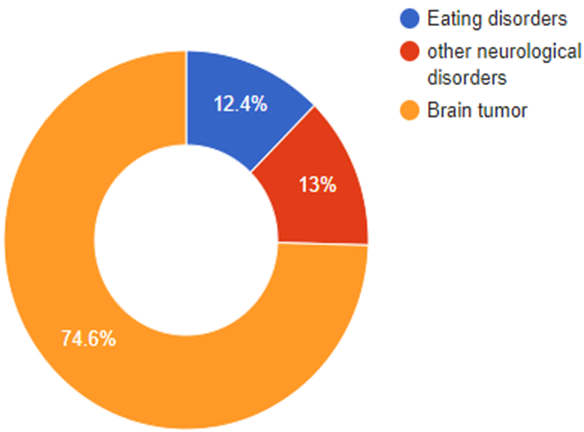
Each year 600,000 people are newly diagnosed with the neurological condition. 19% of hospital admissions are for the treatment of neurological problem from a neurologist or neurosurgeon mostly for stroke, epilepsy, dementia, and head injury.
The European pharmaceutical industry spent approximately of €3.3 billion for the brain research per year, corresponding to that 79% of the total funding for brain research in Europe. Research on neuropsychiatric diseases such as depression or schizophrenia has been supported with EUR 283 million. In Europe overall, the neurological damage accounts for the 40% of people who are severely disabled and who are needed in daily help. The global neuroscience market size will reach up to the $30.80 billion by 2020 from $24.09 Billion in 2013, growing at CAGR of 2.9%. The Asia Pacific industry for neuroscience is estimated to grow at a Compound Annual Growth Rate of nearly 3.0% over the forecast period to reach a revenue of over USD 8.00 billion by 2020. The global market for the Neuromarketing technology is expected to reach about $22.0 million by 2021, increasing at a compound annual growth rate of 18.0% from 2016 to 2021.
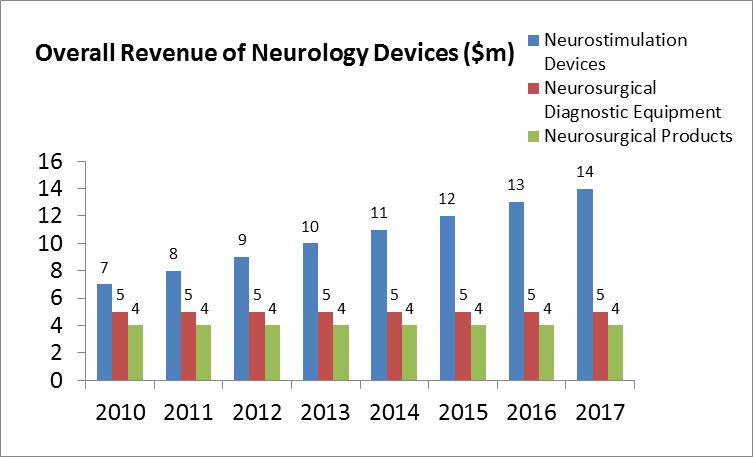
Geographically, neurological disorder drugs market has been segmented into the 10 major regions: Germany, Switzerland, Italy, Russia, Spain, U.K., Switzerland, Netherlands, France, Poland and Rest of Europe. The market for the neurological disorder drugs has been extensively analyzed which is based on their usefulness, effectiveness, sales revenue and also geographic presence. The market size and the forecast in terms of US$ Mn for each disorder and drug class, distribution channel as well as the geographic regions has been provided for the period of 2016 to 2024. Report on this neurological disorder drugs market also provides the compound annual growth rate (CAGR %) for each market segment for the forecast period from 2016 to 2024, considering 2015 as the base year.
Important and scope:
Neurological disorders Is a unique forum to bring worldwide distinguished academics in the field of neuroscience and neurology, Brain researchers, public health professionals, scientists, academic scientists, industry researchers, scholars to exchange about state of the art research and technologies.
The main aim of this conference is to stimulate the new ideas for the treatment that will be beneficial across the spectrum of Neuroscience.
Neurological disorders: This public health challenge describes and discusses the increasing global public health importance of the common neurological disorders like dementia, epilepsy, headache, multiple sclerosis, and neuro infections, neurological disorders which are associated with malnutrition, pain associated with the neurological disorders, Parkinson ’s disease, stroke, traumatic brain injuries.
Conference Highlights
- Brain Disease & Failure
- Brain Diagnosis
- Neurosurgery
- Brain and Neuro Devices
- Brain Degenerative Disorders
- Neurology Nursing
- Neuro Regeneration & Aging
- Neuro physiology & Neuro Pharmacology
- Case Reports in Neurological Medicine
- Neuro- psychiatry and Mental Health
- Cognitive & behavioral neuroscience
- Computational & Theoretical Neuroscience
- Molecular Brain Research
- Neuro immune disorders
- Neurocardiology
- Neuro-Oncology and Brain tumour
- Neurotology
To share your views and research, please click here to register for the Conference.
To Collaborate Scientific Professionals around the World
| Conference Date | December 5-7, 2018 | ||
| Sponsors & Exhibitors |
|
||
| Speaker Opportunity Closed | Day 1 | Day 2 | Day 3 |
| Poster Opportunity Closed | Click Here to View | ||







